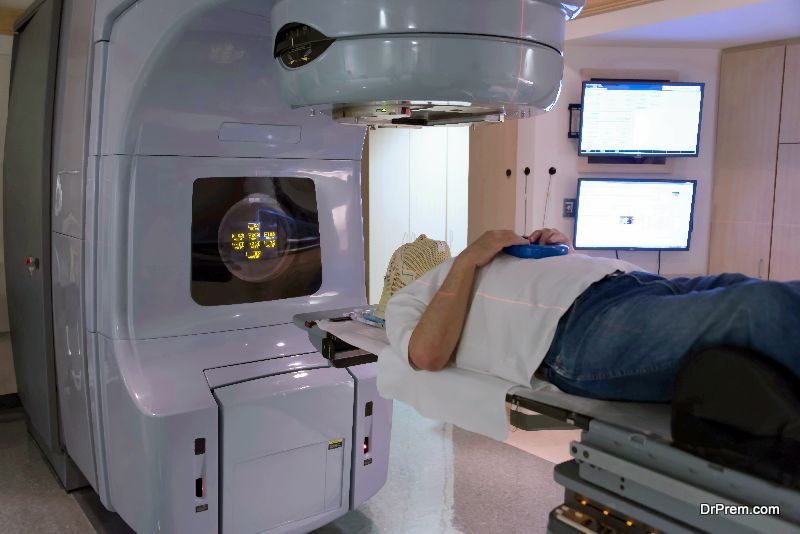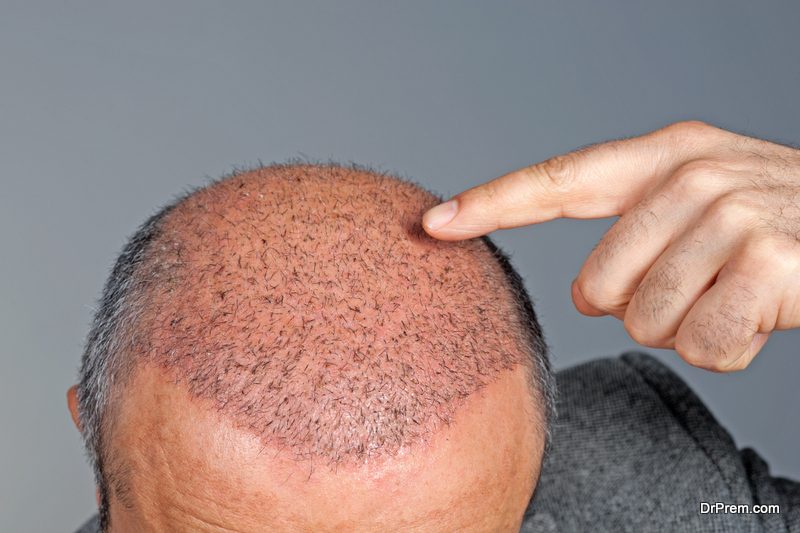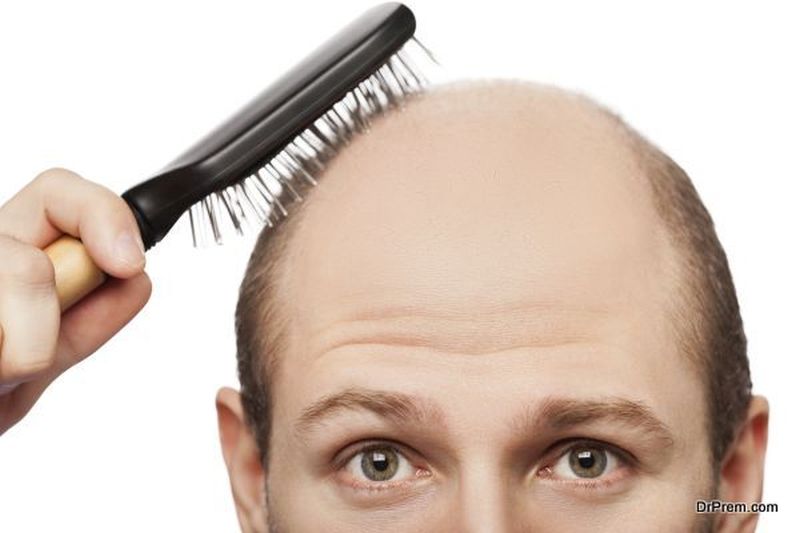By age 50, 85% of men start exhibiting significant hair loss. Thinning hair and male pattern baldness (MPB) can start much younger than this. Did you know that there are several different types and causes of hair loss in men? And identifying the cause is only half the battle won. For countless reasons, men seek alternative methods for treating hair loss. This article will discuss the causes of hair loss in men, aside from available treatment options.
Why Does Hair Loss Happen?
 Hair loss is associated with aging because as a person gets older, hair growth slows down. Hair growth itself is the process of the human body producing new hair cells, which push to the surface of your skin, causing old cells to grow outward. This process happens at a rate of about six inches per year, although some people experience faster or slower hair growth. Normal hair loss includes those stray hair you find on your hairbrush or in the shower.
Hair loss is associated with aging because as a person gets older, hair growth slows down. Hair growth itself is the process of the human body producing new hair cells, which push to the surface of your skin, causing old cells to grow outward. This process happens at a rate of about six inches per year, although some people experience faster or slower hair growth. Normal hair loss includes those stray hair you find on your hairbrush or in the shower.
Hair loss happens with age at a more rapid rate and is classified in several different ways. But why does it happen? Hair loss is attributed to several factors.
Genes
You may be at greater risk of hair loss, if your parents had it.
Stress
Stress causes a long list of changes inside the human body, including an imbalance in hormones. It’s this imbalance that can potentially cause hair loss in men. A common form of hair loss caused by stress is known as telogen effluvium which disrupts the natural growth and rest cycle of hair. Stress can trigger this process.
Drug Use
 Drug use doesn’t always mean the illegal type. Many prescription drugs list hair loss as a common side effect. Common medications that cause hair loss include chemotherapy, blood thinners, and blood pressure medication.
Drug use doesn’t always mean the illegal type. Many prescription drugs list hair loss as a common side effect. Common medications that cause hair loss include chemotherapy, blood thinners, and blood pressure medication.
Hormones
It’s no secret that your hormones control your body’s reaction to many different things and hair growth is one of them. The most common hormonal imbalance that causes hair loss in men is abnormal levels of the hormone known as androgens, which includes testosterone.
Autoimmune Disease
The immune system controls a long list of bodily functions, including hair growth. In some conditions, the autoimmune system revs up, negatively affecting the hair follicles. This can cause hair loss, hair thinning, and difficult regrowth.
Diet
 Not having enough nutrients or vitamins in your diet can cause hair loss. Severely restricting your caloric intake or not ingesting enough protein can both cause hair to fall out or not grow properly.
Not having enough nutrients or vitamins in your diet can cause hair loss. Severely restricting your caloric intake or not ingesting enough protein can both cause hair to fall out or not grow properly.
Medical Conditions
Certain medical conditions have side effects that include hair loss such as diabetes, anemia, thyroid disease, lupus, and certain eating disorders. The good news is, if these underlying conditions are identified and treated, normal hair growth should return.
Cosmetic Reasons
If you perform too many cosmetic procedures on your hair and scalp, it can negatively impact regular hair growth. This is most common in women but men are not completely exempt. Things like bleaching and perking your hair repeatedly can cause thinning of hair and make the remaining hair brittle and weak. While these conditions may cause hair loss and hair thinning for a short period of time, normal hair growth usually returns once these treatments stop.
Injury
 Injuries such as burns, radiation, or X-rays can actually cause hair loss but in most cases, hair growth will return to normal unless there is scarring present.
Injuries such as burns, radiation, or X-rays can actually cause hair loss but in most cases, hair growth will return to normal unless there is scarring present.
Types of Hair Loss
While many of the above mentioned reasons for hair loss are attributed to external factors, there are several different types of hair loss seen in men.
Involutional Alopecia – This is a common and natural condition where the hair gradually thins with age. More hair follicles enter the resting phase and those hairs that are left are fewer and shorter.
Scarring Alopecia – Scarring alopecia causes permanent hair loss and is caused by different inflammatory conditions like acne and cellulitis, and other skin conditions such as lupus. When scarring occurs, follicles are permanently damaged and the re-growth of hair stops completely .
Androgenic Alopecia – This condition is much better known as male pattern baldness (MPB). Unfortunately, this condition can begin as early as the teenage years or early 20’s and is not associated with aging. Tell-tale signs of this condition include thinning of hair around the scalp and crown, as well as a receding hairline.
Telogen Effluvium – When the hair growth cycle changes, you may experience temporary hair thinning. This condition also sends numerous hair into the resting phase, causing thinning and hair loss.
Treatment Options
If one or more of these conditions cause hair loss, whether permanent or temporary, most men seek alternative methods. A full head of hair, for most men, is connected with their self-confidence. Without it, some men feel insecure or less masculine. The good news is there are several ways to treat hair loss, including the following.
Medication
There are two drugs that are federally approved to treat hair loss – Rogaine and Propecia. These medications are used to treat MPB or hair thinning due to genetic reasons. Rogaine is a topical medication applied directly to the scalp where baldness occurs. This treatment is designed to stimulate and increase hair growth. Propecia comes in a pill form and requires a prescription from your doctor.
Hair Transplants
 Hair transplants are becoming more and more popular among men with hair loss and thinning hair. Every individual and their circumstances are different. Depending on the cause of your hair loss, how extensive it is, and if you’ve tried other methods with no success, your doctor can recommend hair transplant or hair replacement options that are right for you. The benefits include realistic looking hair, a permanent remedy, and a boost in confidence. You can learn more about benefits at this site.
Hair transplants are becoming more and more popular among men with hair loss and thinning hair. Every individual and their circumstances are different. Depending on the cause of your hair loss, how extensive it is, and if you’ve tried other methods with no success, your doctor can recommend hair transplant or hair replacement options that are right for you. The benefits include realistic looking hair, a permanent remedy, and a boost in confidence. You can learn more about benefits at this site.
Artificial Hair
While wearing toopas or false hair pieces has definitely decreased in popularity over time, some men still choose this hair replacement option. Fake hair pieces are convenient, relatively inexpensive, painless, and removable when the man chooses not to wear it. The downside to artificial hair is that it is sometimes obvious.
Hair loss is extremely common and accordingly, there are countless treatment options available. Understanding the cause of your hair loss is step one. Once this is under control, you can take the necessary steps to boost your hair growth and successfully boost your confidence as well.
Article Submitted By Community Writer




